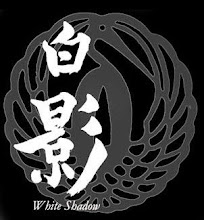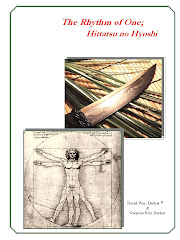
Koryu, Hotrods, and Re-Muddling
There is something in the American psyche that says I can make it better. I suppose this is one of the reasons why many people who settled here decided to leave their mother country throwing caution and tradition to the winds. There is also some unspoken rule that says newer or faster is always better. Well folks, it isn’t necessarily so.
Many years ago my wife and I were house shopping for an older home, a nice Victorian, Greek Revival, or Queen Anne. We would have settled for a classic American farm house, if we could have found one. What we soon realized was that many people in the upper income brackets bought new homes made with substandard materials pretending to look like old homes. A lot of average income families bought the type of houses we were looking for and “fixed them up.” During our house search we discovered a new architectural term, re-muddling. This means taking a house with lots of potential and destroying any intrinsic charm or historic value by trying to modernize it.
Re-muddling could be as innocuous as covering hardwood floors with carpet, or as vulgar as gluing bright orange shag carpeting to the walls as pseudo-wainscoting or covering up cracked plaster and lathe walls with textured vinyl paneling. Common symptoms of re-muddling are: dropped ceilings, replacing solid wood doors with flimsy hollow cored ones, discarding large paned windows and installing house trailer sized ones, and removing supporting walls - to build a breakfast bar complete with the requisite old west stools.
What do the lower class folks do? They live in a rusting mobile home plopped down next to a charming but crumbling cobblestone house or a rotting Queen Anne. Rather than invest the time and money into preserving the old homestead, they opt for the luxury of formica counter tops and pressboard kitchen cabinets. Instead of fixing the old slate or tile roof they huddle under a tarred aluminum one while the grand dame their forebears cleared land and cut lumber to build tumbles to the ground.
In the 1950s it was especially popular to take old cars and convert them into hotrods. Many of these old cars were substantial vehicles, with quiet low revving motors, plush interiors and polished wooden dashboards. These cars ran smoothly and quietly, moving with a certain grace and panache. While a Hudson, Sudebaker, or Desoto might not win any sprint races they could probably extract many of today’s off-road vehicles from a rutted road. With no thought to their intrinsic value many of these cars were either left rotting in farm fields, stripped for parts, or modified into hotrods. The recipe for a hotrod was simple. Take any 1940s coupe, strip off the front fenders, hood and grill and replace these with fenders from a motorcycle. Auto re-muddlers – AKA hot rodders - also threw out the original engines and transmissions, along with all of that upholstery and wooden dashboards. They replaced these with orange or lime green shag carpet – the cure-all for all types of re-muddling – put in an aluminum dashboard and a steering wheel that is four sizes too small. Its always a hit with the car show crowd if you replace the original wood rimmed steering wheel with one made of welded and chromed links of chain. If this re-muddling is done properly you end up with a fast, loud, ill handling car, with a roof so low you can barely see out the tank-slit of a windshield. The good thing is that after the alterations are complete no one can tell whether you destroyed a Ford, Chevy, Plymouth, etc. This helps to prevent the local conservator - who restores antique cars - from committing violent acts against your person. That same oddball conservator is often seen patiently trudging through the muck of some auto graveyard or barnyard hoping to find a discarded engine and transmission to restore some old, useless thing. Are you seeing any parallels yet?
Not too long ago I quietly reminded a new Iaido student to bow when he entered my dojo. His response was, “In Tae Kwon Do we don’t do all of that old stuff, we only do what works.” I could smell the heady aroma of fresh shag carpet as he strutted by. This young man had recently received his black belt and he wanted the entire world to know that he had mastered his art form - which is about sixty years new. With a sublime air of superiority he presumed to explain to me why his style was better than the four hundred year old Koryu I study. It was obviously better because his style is newer and had eliminated all of the extraneous “stuff”, like courtesy, formality, and respect. He never questioned how our style had survived for four hundred years.
Recently while training with a junior sword student he consistently took the wrong stance. I kept correcting it and he kept ignoring it. Finally I asked him if he didn’t understand the posture. He replied that he did but he thought his was better because it gave him two inches more reach. In the background I could swear I heard blatting engines and oversized tires squealing around the A&W parking lot. When I explained to him that his posture exposed his entire left side to attack he decided maybe he would try it the old way. I am old fashioned but it would seem to me that before a student can rightfully ask “why” you do something, they need to ask “how” you do it. It is impertinent and insufferably arrogant to suggest improvements to a technique that you still cannot perform satisfactorily.
Adding fuel to the discussion was the opinion that since our Japanese teachers had not seen fit to come to America more than once a year that we were left on our own to analyze and “work-out” what the techniques meant. I do not remember them giving us this task, only showing us what we needed to work on and leaving us to do it. I am content to work these techniques knowing that they have been perfected by many swordsmen finer than myself. I take it on faith that they work – even if I don’t fully understand how or why.
We could argue these technical points over the formica-topped breakfast bar, sipping a double latte’, but not when we are on the dojo floor. Seriously, since when did students begin to assert their right to analyze and dissect a school’s teachings, altering them to fit their own needs before they can even duplicate the techniques - as performed for them by a man in his sixties? If a question arises then take it to the teacher and do not presume to form your own corrections until you are the teacher. Even then, you must be very careful not to modify things just for the sake of change! Only in America would a student expect that the teacher owed it to him to travel six thousand miles just for the privilege of teaching him. Even Mohammed finally bent his will and went to the mountain. There was never a question of whether the mountain was obliged to come to him or whether there was a shorter, faster way to get to the mountain.
If the tile roof on your Greek Revival leaks don’t slap a blue tarp over it, fix the tiles and for God’s sake be careful where you park that mobile home. You don’t want to dent your shiny new tenement on wheels by backing into Grandma’s tumbling-down Victorian house. I’m sure you would tear the old thing down to improve the view of the rusting Hudsons and Desotos in your back yard, but that too would take too much work.
Does hot-rodding or re-muddling occur in the martial arts? Come-on, do you really have to ask? Are you a martial arts re-muddler? Have you introduced motorcycle fenders, chain steering wheels, and shag carpet into your school? Have you convinced yourself that by doing so you have invented a better way? If so, please give your teachers the courtesy of calling it something different to save them embarrassment. If you can’t perform your teacher’s techniques, if you won’t invest the time or money to learn them, it is no big deal. Strike out on your own and say their techniques were old useless “Stuff” anyway. Hey, why not start your own school? Since there are hundreds of other people too lazy to follow tradition, finding students should not be a problem. Create a new style and invent lots of new techniques. It doesn’t matter if your students cannot make them work, just tell them that the techniques are too advanced for them and if they did learn them they’d be too lethal to use. Name your new style something modern and flashy and use all of the new buzz-words and politically correct phrases. To be safe never allow your students to compete against other schools because they might be beaten by students who learned by old-fashioned hard work and sweat. Instead, let your students compete internally where they can see the full value of your new methods. You can proudly display their chromed plastic trophies in the shag-carpeted entrance where you sell rubber shuriken, budo knick-knacks, and subscriptions to Blank Belt magazine. Make sure that every new student signs a long contract or next week they’ll be opening their own school just down the street. They’ll be teaching a new style and explaining how old fashioned and useless your techniques are. You might find yourself alone on a barstool, leaning on your trophy case and drinking a double latte’. Just think, isn’t it wonderful, the American way of life and free enterprise?






No comments:
Post a Comment